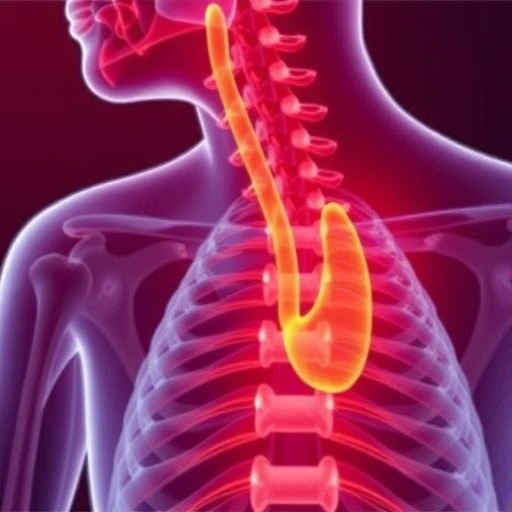In the contemporary pursuit of healthier lifestyles, consumers are paying unprecedented attention to the nutritional quality of their diets, often favoring fruits, vegetables, and other nutrient-dense foods. However, a surprising and concerning factor shadows these dietary choices: the presence of polycyclic aromatic hydrocarbons (PAHs), a class of hydrophobic organic compounds with multiple fused aromatic rings. Found commonly as contaminants in various foods, PAHs arise both from environmental pollution and from specific cooking processes such as heating, smoking, grilling, roasting, and frying. These compounds are not merely incidental byproducts; many PAHs are well-established carcinogens, raising significant public health concerns worldwide.
Scientists and food safety experts have thus faced a formidable challenge: devising analytical techniques that can reliably detect and quantify PAHs in diverse food matrices with high sensitivity, accuracy, and efficiency. Traditional extraction methods such as solid-phase extraction, liquid-liquid extraction, and accelerated solvent extraction have long been the cornerstone of PAH analysis. While these approaches have been instrumental in identifying contaminants, they suffer drawbacks including prolonged processing times, environmental burdens due to solvent use, high operational costs, and labor-intensive workflows. In response to these limitations, the QuEChERS extraction method has recently emerged as an innovative and promising alternative.
QuEChERS, an acronym representing Quick, Easy, Cheap, Effective, Rugged, and Safe, revolutionizes sample preparation by streamlining the extraction and purification stages into a more rapid, cost-effective, and environmentally friendly process. This method, initially developed for pesticide residue analysis, has been adapted to detect organic contaminants like PAHs within complex food matrices. Its operational simplicity not only accelerates laboratory workflows but also minimizes the use of hazardous chemicals, aligning with growing demands for sustainable research practices and improved occupational safety.
A breakthrough study led by Professor Joon-Goo Lee and his team at the Department of Food Science and Biotechnology, Seoul National University of Science and Technology (SEOULTECH), sought to harness the potential of the QuEChERS method for the precise analysis of eight priority PAHs in food items. These target compounds include Benzo[a]anthracene, Chrysene, Benzo[b]fluoranthene, Benzo[k]fluoranthene, Benzo[a]pyrene, Indeno[1,2,3-cd]pyrene, Dibenz[a,h]anthracene, and Benzo[g,h,i]perylene—molecules noted for their toxicity and carcinogenicity. The findings of this rigorous investigation were published in the August 2025 issue of the esteemed journal Food Science and Biotechnology.
In this study, acetonitrile was employed as the extracting solvent, chosen for its compatibility and efficiency in gathering PAHs from varied food matrices. Subsequent purification involved sophisticated sorbent combinations designed to effectively remove interfering substances without compromising PAH recovery. The methodological validation revealed exceptional linearity in calibration curves across the eight PAHs, with coefficients of determination (R²) surpassing 0.99. This statistical robustness underpins the reliability of the QuEChERS method in quantitative analysis.
Further analytical interrogation via gas chromatography–mass spectrometry (GC–MS) affirmed the method’s outstanding sensitivity. Limits of detection (LOD) were impressively low, ranging between 0.006 and 0.035 micrograms per kilogram (µg/kg), while limits of quantification (LOQ) extended from 0.019 to 0.133 µg/kg. Recovery rates for the PAHs across various fortified samples demonstrated remarkable efficiency, fluctuating between 86.3% and 109.6% depending on concentration levels, with precision values maintained within a narrow margin of 0.4% to 6.9%. These metrics collectively illustrate that the QuEChERS protocol not only accelerates analysis but also ensures data integrity and reproducibility.
Professor Lee highlighted the transformative impact of this methodology, emphasizing that “this method not only simplifies the analytical process but also demonstrates high efficiency in detection compared to conventional methods. It can be applied to a wide range of food matrices.” His commentary underscores the versatility and potential scalability of the QuEChERS technique in addressing food safety challenges on a broader scale.
From an industrial perspective, adoption of this technology could revolutionize quality control and safety inspection processes within the food production sector. The reduction in analysis time, cost savings, and lowered environmental impact present compelling incentives. Moreover, enhanced safety protocols in laboratories reduce the risk exposure of personnel to toxic solvents and contaminants, fostering healthier working environments.
The environmental implications of streamlined PAH detection cannot be overstated. Conventional methods often rely on large volumes of organic solvents that contribute to hazardous waste and atmospheric emissions. By adopting the QuEChERS approach, laboratories can drastically decrease solvent consumption, reinforcing their commitment to sustainability and ecological stewardship. This becomes especially relevant as regulatory agencies intensify demands for safer food surveillance and as consumer awareness of foodborne carcinogens heightens globally.
Ultimately, the advancement presented by this research paves the way for improved public health outcomes. By equipping scientists and regulators with a tool that accurately and rapidly quantifies carcinogenic PAHs in food, the possibility of mitigating long-term exposure risks becomes more tangible. As the public increasingly scrutinizes food safety, transparent and reliable analytical methods become essential pillars in building trust and ensuring the safety of consumables.
The dedication of Prof. Joon-Goo Lee and his collaborators embodies the synthesis of technical innovation and practical application, illustrating the dynamic role of food science in contemporary health paradigms. Their contribution resonates deeply within the broader efforts to refine analytical chemistry methodologies tailored for real-world problem solving.
Looking ahead, further exploration into the application of QuEChERS for other hazardous food contaminants holds promise. Expanded validation across a wider spectrum of food types, including processed, raw, and composite meals, could cement this method as a standard in food contaminant analysis. Cross-disciplinary collaboration between chemists, toxicologists, and food safety regulators will be crucial in realizing these advancements.
In this evolving landscape of food safety and analytical chemistry, the QuEChERS method stands out as a testament to ingenuity and pragmatic design. Its incorporation into routine laboratory workflows symbolizes a pivotal step toward safeguarding the food supply chain from carcinogenic threats and protecting public health at large.
Subject of Research: Not applicable
Article Title: QuEChERS method development for the GC–MS analysis of polycyclic aromatic hydrocarbons in food
News Publication Date: 12-Aug-2025
Web References:
Journal webpage: Food Science and Biotechnology
Seoul National University of Science and Technology: https://en.seoultech.ac.kr/
References:
DOI: 10.1007/s10068-025-01910-2
Image Credits: Credit: Prof. Joon-Goo Lee from SeoulTech, Korea
Keywords: Food safety, Food science, Food chemistry, Foods, Food production, Carcinogens, Human health, Health care, Biotechnology, Applied sciences and engineering
Tags: analytical techniques for food safetycarcinogenic compounds in popular foodsconsumer awareness of food contaminantscooking methods and PAH levelsenvironmental impact on food qualityfood safety and PAH detectionhealth risks of polycyclic aromatic hydrocarbonsinnovative food analysis techniquesnutritional quality and safetyPAH contamination in foodpublic health concerns regarding food pollutantsQuEChERS extraction method





